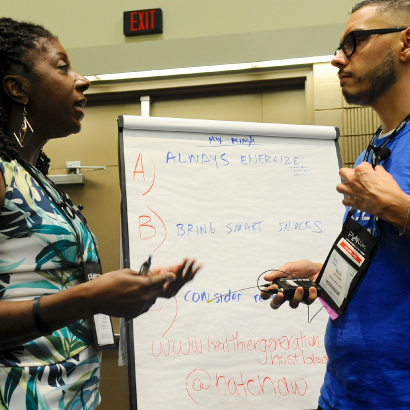
Last month during the Opening General Session of NRPA’s annual conference in New Orleans, NRPA CEO and President Barbara Tulipane noted that it’s time for parks to focus on providing solutions to the community. The benefits of local park and recreation are clear: a safe space for people to gather; out-of-school-time facilities for students; physical activity facilities. But what are some of the solutions offered by parks and recreation?
Conference sessions led by some of the best park and recreation professionals in the field highlighted some answers to common issues.
Issue: Not enough time, funding or staffing. Solution: Use a different lens to look at what you already have.
- Consider a partnership with local farms to bring in low cost, fresh foods, like South Burlington Parks and Recreation did with their farm to table meals program.
- Open your agency to internships, which Gwinnett County Department of Community Services found successful. Many higher education students are required to complete an internship or research project, which makes this a free way to tap into their knowledge while allowing students to receive hands-on training.
- Shop on Amazon! The launch of the Healthier Generation Store, a partnership with Amazon Business and the Alliance for a Healthier Generation allows agencies to do one-stop healthy shopping online and have food delivered straight to your facility.
Issue: Community engagement is a challenge. Solution: Welcome your community in a variety of ways, and go straight to the source – ask your community what they want.
- Engage parents or caregivers when they pick up their child from an out-of-school-time program by inviting them to ask about a topic of the week, such as foods of the month, physical activity, or healthy recipes.
- Print facilities signs and materials in multiple languages and formats, so news and messages are clear and understood by everyone.
- Familiarize staff with various cultural traditions, so careful consideration can be made when making programming decisions. For example, holiday programming throughout the whole winter, rather than a Christmas celebration only. Partnering with local faith-based organizations is a great way to build community relationships while learning about different cultures.
- Show the community what’s available, and make it easy for them to participate. Host open houses, have demonstration days, provide easy keycard access to all community facilities, consider mobile units to go out into the community.
Issue: Park and recreation agencies feel unsupported. Solution: Consider public-private partnerships.
- Identify target audiences, then build your partnership based from there. For example, if you are aiming for more diversity in your facilities, a partnership with community and faith-based organizations may be beneficial. If you are aiming for a healthier community, you could form partnerships with local farmers markets.
- Have a plan. Come to the table with clear roles and responsibilities for all parties involved, and host regular check-ins and discussions to keep the goals front and center.
- Remain true to your mission. Seek partners that have the same values as your agency, and can contribute to your goals. It’s also beneficial to not make assumptions about potential partners before reaching out. The “perfect partner” on paper may turn out to not align with your values, while the organization you know less about at first may turn out to be the perfect fit.
- Be open-minded. There may not be one perfect fit for your public-private partnership. Be open to inviting multiple partners of various sizes to band together to find the solution for your community.
Find more resources to help park and recreation agencies find solutions that suit their community on our Commit to Health site.
Maureen Acquino is a Program Specialist for NRPA’s Health and Wellness Team.

